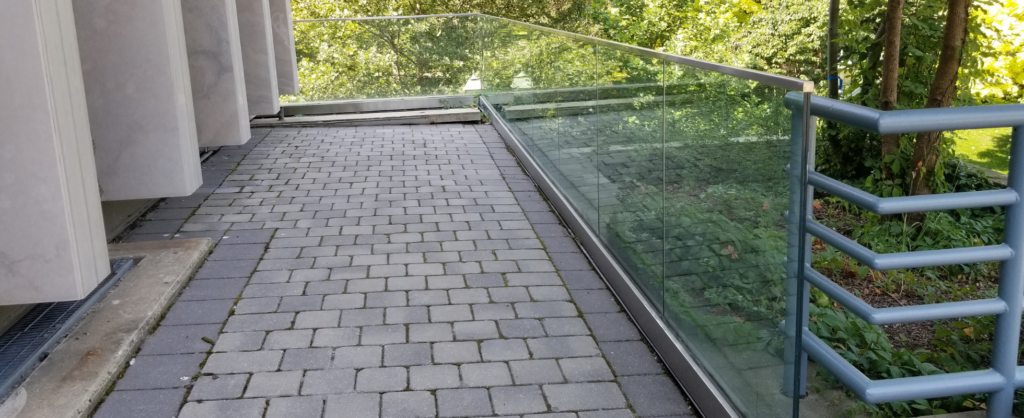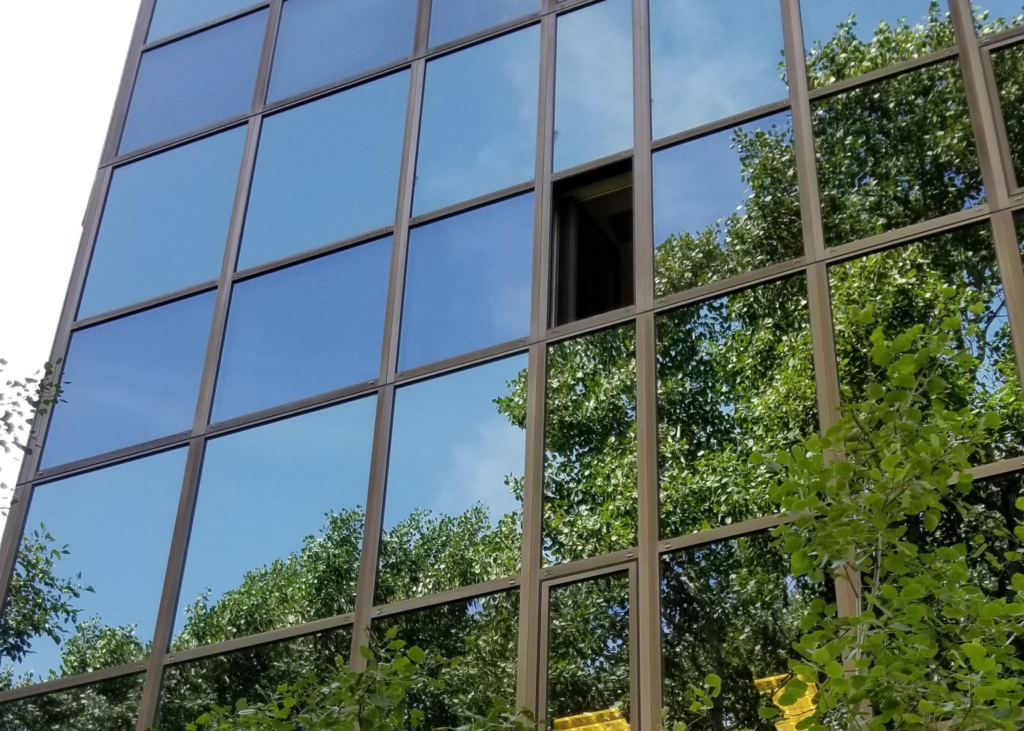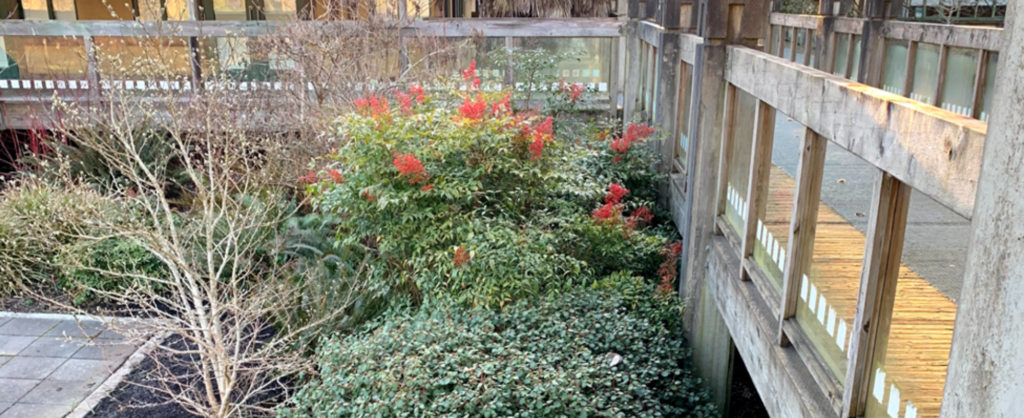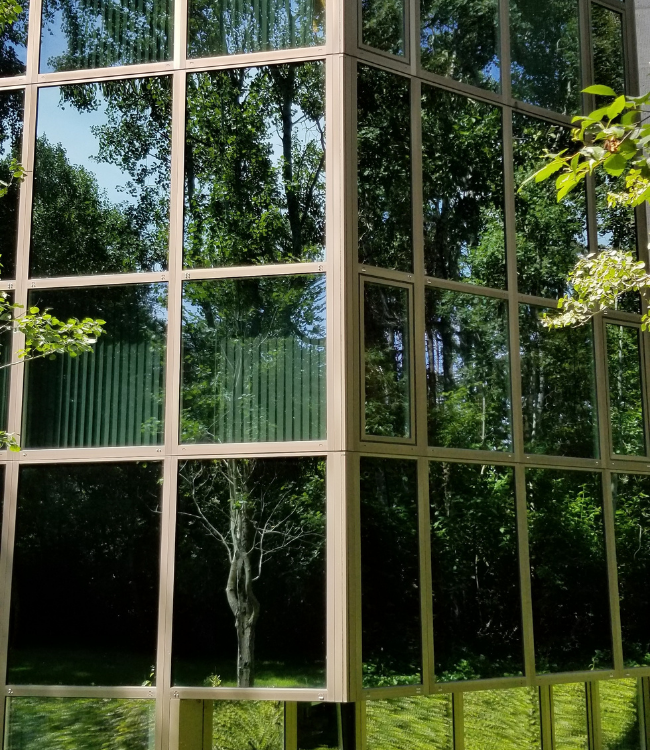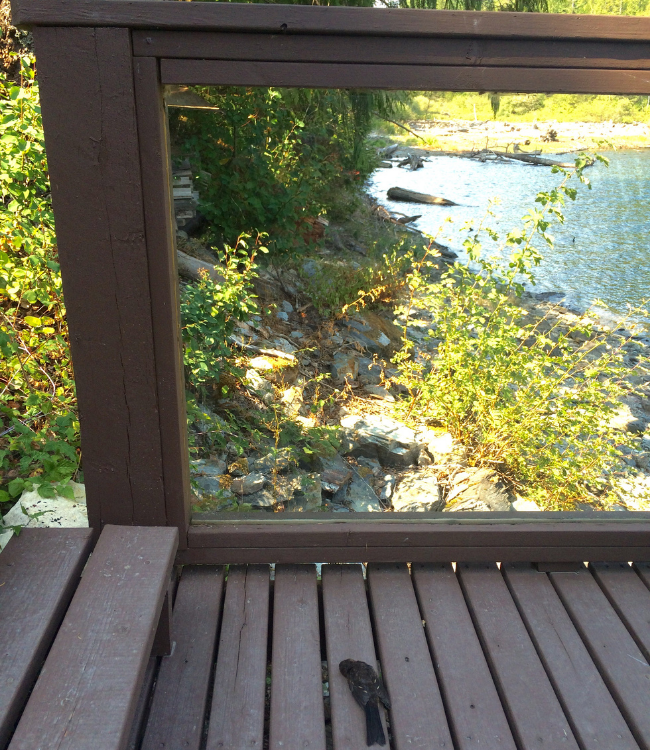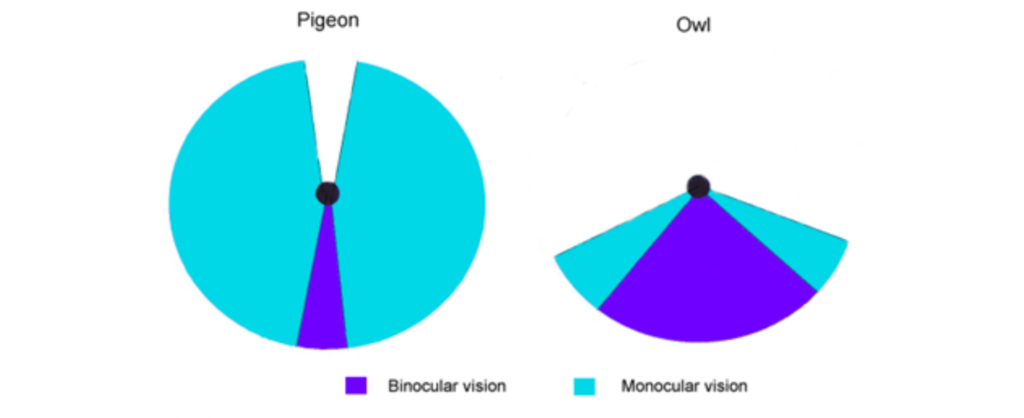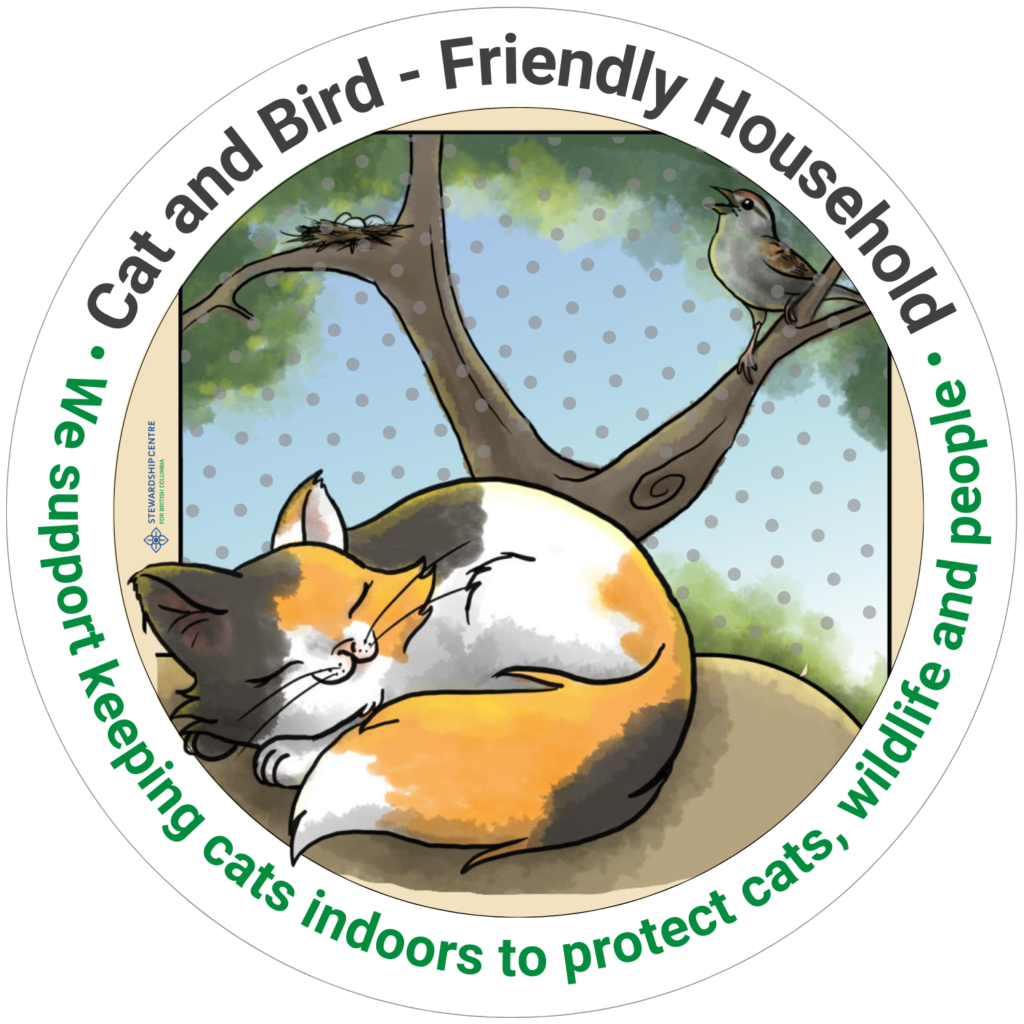Cats and Birds | Helping Birds
Five causes of bird-window collisions
Have you ever seen or heard a bird hitting your window or glass balcony railing? While some birds recover from collisions, most aren’t as lucky. Collisions with windows are a major source of wild bird mortality, affecting over a billion birds in North America and up to 42 million birds in Canada each year alone (Klem, 2015; Loss et al. 2014; Machtans, Wedeles, and Bayne, 2013).
Why do birds hit windows in the first place? In this article, we’ll introduce five environmental and biological factors that help explain why birds collide with glass surfaces, and what makes some birds more susceptible to collisions than others.
Considering that 90% of all Canadian window collisions occur at homes (Machtans, Wedeles, and Bayne, 2013), you can feel good about making a difference for your local and visiting bird populations!
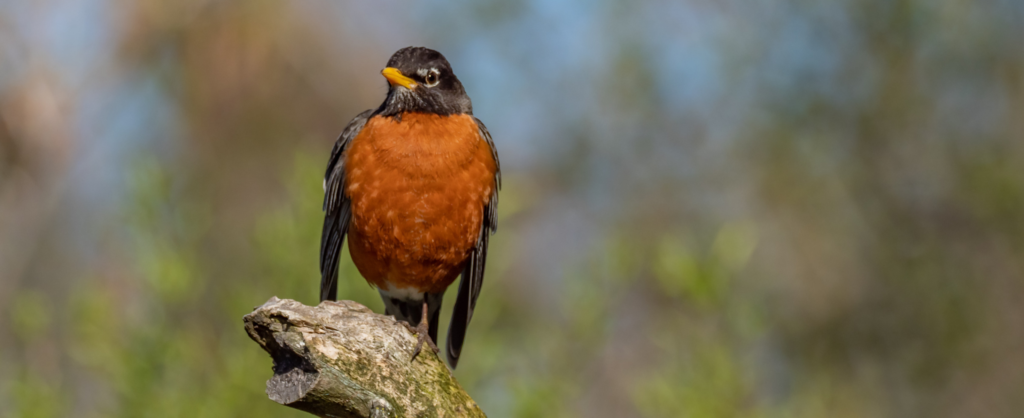
American Robin. Photo: Patrice Bouchard.
What are Window Collisions?
Window collisions can be lethal for birds, as they succumb to their injuries immediately or soon after or are easily preyed upon in a vulnerable post-collision state of shock (Loss et. al., 2019).
As urban development continues, and as glass becomes an increasingly popular building material, birds are more at risk than ever from collisions with glass (Klem, 2009). This is a pressing issue not only because human activity has resulted in the deaths of billions of individual animals, but since bird species positively contribute to biodiversity and provide ecosystem services we rely on like seed dispersal, pollination, and insect management, among others (Morante-Filho & Faria, 2017).
Why Do Birds Hit Windows?
Birds see the world differently from us. While we know we can’t pass through glass surfaces, they don’t have the same insight! Collisions can depend on factors like the area and type of glass, surrounding vegetation, and even the individual bird. You’ll find some explanations for why birds hit windows below.
There are two main properties of glass that cause collisions: transparency and reflection.
Transparency: Transparent glass surfaces create the illusion of a clear passageway for birds to fly into, as do wall-to-wall glass surfaces like walkways or large windows facing opposite sides of a building.
Transparent glass walkway at the University of Toronto. Photo: Krista De Groot.
Reflection: Birds are at risk of colliding with glass when it reflects the environment around it. Windows may reflect open sky or vegetation, and birds perceive this as a continuation of their habitat, colliding with the reflective surfaces.
Glass windows reflect the surrounding vegetation at the University of Victoria. Photo: Krista De Groot.
The height, density, and species of plants growing close to glass surfaces is also a factor for collision rates (Brown, et. al, 2019).
Large groups of birds are drawn to different types of trees, flowers, and shrubs because of the food and shelter they provide (Brown et. al, 2019). Large flowering or ornamental fruit trees in particular pose as an attractive source of insects and fruit and can accommodate lots of birds at the same time.
When more birds are drawn to vegetation near glass surfaces, collision rates can increase. This is an important aspect to consider since birds are known to suffer injuries from colliding with surfaces as close as 1m away from takeoff (Schneider et. al., 2018).
Glass walkway close to vegetation at the UBC Botanical Garden. Photo: Bryna Turk.
As birds make their migration journeys, they’re navigating new environments. This means they might not be as aware of the risks certain glass structures pose, compared to birds who live in the same area year-round and may have more familiarity with local buildings.
Birds migrating at night may also become disoriented by light emitted from glass buildings and windows and collide (Lao et. al., 2020).
Reflection of surrounding vegetation at the University of Victoria. Photo: Krista De Groot.
Species that search for food on the ground like ovenbirds, thrushes, and sparrows have been found to be more affected by collisions (Ocampo-Peñuela et al., 2016). This is likely because they are adapted to navigating obstacles present in forest understories like tall trees and thick brush and may be more likely to perceive windows as openings to duck and dodge through (Ocampo-Peñuela et al., 2016).
To be effective, window treatments should be spaced 5 cm by 5 cm (about the width of two loonies) to effectively deter birds from trying to pass through (FLAP Canada, 2022).
A recent study looked at how many and what kinds of birds were hitting windows at the UBC Vancouver Campus and found the Varied Thrush to be 76.9 times more likely to collide with buildings compared to other birds, while the Spotted Towhee was 58 times more likely (De Groot et. al., 2021).
Juvenile Spotted Towhee who collided with a transparent glass walkway. Photo: Andrew Huang.
With the exception of birds of prey, most birds have eyes on the sides of their heads. This gives them what is called monocular vision, where each eye is focused on a different object at the same time. This is different from humans, who have two eyes focusing on the same thing at once. Monocular vision helps to detect predators, but limits what they see directly in front of them. This can pose issues in detecting windows!
Birds have monocular vision allowing them to see their surrounding on either side and less in front of them. Because of that, birds may fail to detect glass in front of them during flight. Bird Vision. Photo: Wikimedia Commons.
Brown, B. B., Kusakabe, E., Antonopoulos, A., Siddoway, S., & Thompson, L. (2019). Winter
bird-window collisions: mitigation success, risk factors, and implementation
challenges. PeerJ, 7. https://doi.org/10.7717/peerj.7620
De Groot, K. L., Wilson, A. G., McKibbin, R., Hudson, S. A., Dohms, K. M., Norris, A. R., Huang, A. C., Whitehorne, I. B. J., Fort, K. T., Roy, C., Bourque, J., & Wilson, S. (2022). Bird protection treatments reduce bird-window collision risk at low-rise buildings within a pacific coastal protected area. PeerJ (San Francisco, CA), 10, e13142-e13142. https://doi.org/10.7717/peerj.13142
De Groot, K. L., Porter, A. N., Norris, A. R., Huang, A. C., & Joy, R. (2021). Year-round monitoring at a Pacific coastal campus reveals similar winter and spring collision mortality and high vulnerability of the Varied Thrush. Ornithological Applications, 123(3), 1. https://doi.org/10.1093/ornithapp/duab027
Fatal Light Awareness Program (FLAP) Canada. (2022). Bird-Safe Window Marker Guidelines. FLAP Canada. Retrieved August 2, 2022, from https://flap.org/stop-birds-frohttps://flap.org/stop-birds-from-hitting-windows/#guidelinesm-hitting-windows/#guidelines
Klem, D. (2009). Preventing Bird–Window Collisions. The Wilson Journal of Ornithology,
121(2), 314–321. https://doi.org/10.1676/08-118.1
Klem, D. (2015). Bird–Window collisions: A Critical animal welfare and conservation issue.
Journal of Applied Animal Welfare Science, 18(sup1).
https://doi.org/10.1080/10888705.2015.1075832
Lao, S., Robertson, B. A., Anderson, A. W., Blair, R. B., Eckles, J. W., Turner, R. J., & Loss, S.
R. (2020). The influence of artificial light at night and polarized light On bird-building
collisions. Biological Conservation, 241, 108358.
https://doi.org/10.1016/j.biocon.2019.108358
Loss, S. R., Lao, S., Eckles, J. W., Anderson, A. W., Blair, R. B., & Turner, R. J. (2019). Factors
influencing bird-building collisions in the downtown area of a major North American
city. PLOS ONE, 14(11). https://doi.org/10.1371/journal.pone.0224164
Machtans, C. S., Wedeles, C. H. R., & Bayne, E. M. (2013). A first estimate for canada of the number of birds killed by colliding with building windows. Avian Conservation and Ecology, 8(2), np-np. https://doi.org/10.5751/ACE-00568-080206
Morante-Filho, J. C., & Faria, D. (2017). An Appraisal of Bird-Mediated Ecological Functions
in a Changing World. Tropical Conservation Science, 10, 194008291770333.
https://doi.org/10.1177/1940082917703339
Ocampo-Peñuela, N., Winton, R. S., Wu, C. J., Zambello, E., Wittig, T. W., & Cagle, N. L. (2016). Patterns of bird-window collisions inform mitigation on a university campus. PeerJ (San Francisco, CA), 4, e1652-e1652. https://doi.org/10.7717/peerj.1652
Schneider, R. M., Barton, C. M., Zirkle, K. W., Greene, C. F., & Newman, K. B. (2018).
Year-round monitoring reveals prevalence of fatal bird-window collisions at the
Virginia Tech Corporate Research Center. PeerJ, 6.
https://doi.org/10.7717/peerj.4562
Conclusion
There needs to be more consideration for our feathered friends when it comes to our choice and placement of glass surfaces, and you can help! Just as there are many factors that influence bird-window collisions, there are a variety of effective ways you can help! See our listed resources for ways to reduce collisions depending on your preferences.
Further Reading and Resources:
Explore more resources on our Cats and Birds website:

